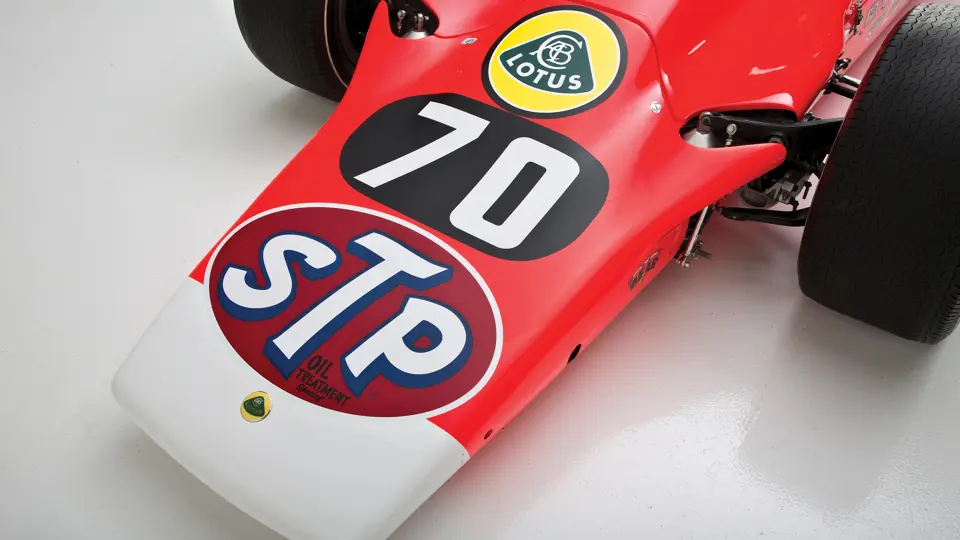
1968 Lotus 56 Indianapolis
{{lr.item.text}}
$900,000 - $1,200,000 USD | Not Sold
{{bidding.lot.reserveStatusFormatted}}
- The third of four examples built
- Driven by racing legend Graham Hill at the 1968 Indianapolis 500
- Campaigned by the groundbreaking Team Lotus
- The single most technological revolution in motorsports
- Privately owned for many years by NASCAR legend Richard Petty
- Restoration supervised by Clive Chapman and Vince Granatelli
- Displayed at the Indianapolis Motor Speedway Hall of Fame Museum
- Honored at the 2014 International Historic Motoring Awards and the 2014 Quail Motorsports Gathering
Est. 500 bhp, Pratt & Whitney ST6N-74 gas turbine engine, single-speed direct-drive planetary gear set transmission, four-wheel drive, front and rear independent wishbone suspension with inboard coil springs, over-adjustable shock absorbers, and four-wheel inboard Girling ventilated disc brakes. Wheelbase: 102 in.
Following the major paradigm shift in racing that saw engines relocated to behind the cockpit, one more important revolution briefly threatened to emerge during the 1960s, that of turbine engines. Traditional manufacturers and racing companies justifiably felt threatened by the high-horsepower jet motors, and they eventually banned the engines outright, but not before a short run of remarkable race cars demonstrated the raw potential of the platform. Among these cars, few rank as highly as the 1968 Lotus 56, which was built specifically for the Indianapolis 500 before being briefly modified for Formula 1 use.
The story of chassis number 56-3 begins with Andy Granatelli, the former racer turned businessman who began annually entering teams at the Brickyard in 1946. Eventually becoming chairman of STP Oil Treatment, Granatelli ran Novi-powered cars that struggled to make an impact, but he noted in 1962 how a Dan Gurney-driven Boeing Turbocar showed great reliability through practice even though it failed to qualify. Through the mid-1960s, Granatelli incorporated four-wheel drive into his chassis to absorb the outrageous torque (and resulting wheel spin) of the 700-horsepower engines. He soon realized that the same principal would apply to turbine engines, which put out almost 900 pound-feet of torque from a dead stop.
Sourcing a Pratt & Whitney ST-6 turbine engine, Granatelli and his brothers built a cigar-shaped racer under the banner of their Paxton Products Company, with sponsorship provided by STP. The car was entered at the 1967 Indy 500, and Parnelli Jones caused quite a stir by leading for 171 laps before a gearbox failure forced his retirement during lap 197, with the win in sight. The turbine’s impressive performance was poorly received, however, as it essentially put traditional internal-combustion concerns on notice. USAC officials reacted predictably, changing the formula for 1968 to limit the amount of horsepower a turbine would be allowed to develop, and regulating the size of the car’s air inlets, which were key to the turbine’s ability to develop maximum power.
Nevertheless encouraged by Jones’ performance in 1967, Granatelli collaborated with Team Lotus for a 1968 turbine car, investing significant resources and the backing of his STP Oil Treatment sponsorship. Once again, Granatelli sourced PT-6 engines, which were de-tuned to develop about 500 horsepower. The overall design of the 1967 car was nicknamed “Silent Sam” for the turbine’s quiet performance.
Lotus designer Maurice Phillippe undertook careful testing in a wind tunnel to develop new bodywork that would effectively limit the front-end lift exacerbated by Indy’s high-speed oval track, which had compromised prior Lotus entries at Indianapolis. The design that he proposed was a study in aerodynamic simplicity, and it became an inspiration for a wave of wedge-shaped open-wheel race cars that followed, including the majority of Formula 1 designs.
Four examples of the Lotus 56 were ultimately built, with three cars entered in the 1968 Indianapolis 500 and one serving as a back-up car. The Lotus team was undergoing a spate of tragedy as the race neared, as both Jim Clark and Mike Spence had recently perished behind the wheel within a month of one another. American drivers Joe Leonard and Art Pollard were recruited as late substitutes for Team Lotus, joining 1966 Indy 500 winner Graham Hill, who assumed driving duties of car #70, chassis number 56-3.
Parnelli Jones declined to reprise his run in Silent Sam, but the withdrawal allowed him to focus on tuning Leonard’s car, with fantastic results. During four laps of qualifying, Hill set a new speed record in 56-3, with an average speed of 171.208 mph (only to be outdone by Leonard’s average of 171.559 mph). The two Lotuses became the first-ever turbine cars to earn pole-position starts at the Indianapolis 500.
Unfortunately, after 110 laps of racing, 56-3 lost a wheel and backed into the wall during a turn, leaving the other two Lotus turbines to fight out the contest’s conclusion. Despite one car leading after a late accident, both cars ultimately failed with broken fuel shafts, a result of overheated gases that accumulated in the turbines during the extended low-speed caution flag. Yet despite the retirement of all three cars, the Lotus 56 showcased the tremendous promise of turbine engines, with Leonard having led for 31 laps and vying for the lead when his car #60 failed after 191 laps (just nine laps from the finish).
After the retirement that officially netted 19th place at the 1968 Indianapolis 500, chassis number 56-3 was never raced again. It was then displayed at the STP headquarters for several years before being given to NASCAR legend Richard Petty. After 15 years in the famed racer’s personal collection, the Lotus was sold to the consignor, who commissioned a ground-up restoration supervised by Clive Chapman of Classic Team Lotus (the son of Lotus founder Colin Chapman), and Vince Granatelli, the son of Andy Granatelli.
In 2014, having been mechanically rejuvenated and cosmetically freshened to its 1968 racing livery, chassis 56-3 appeared at the Indianapolis Motor Speedway in a reunion with the two other Lotus turbine cars from the 1968 Indy 500. Parnelli Jones, himself, took the wheel of 56-3 for a demonstration run, while Mario Andretti and Vince Granatelli drove the other two cars. Following this presentation in front of the packed grandstand, the groundbreaking Lotus was put on display at the Indianapolis Motor Speedway Hall of Fame Museum. Further acclaim was bestowed at the 2014 International Historic Motoring Awards, where the car was nominated for Car of the Year, and the 2014 Quail Motorsports Gathering in Carmel Valley, California, where it garnered Octane magazine’s Editor’s Choice Award.
Claiming use in only one race, the 1968 Indianapolis 500, where it was driven by the legendary Graham Hill (perhaps the only driver to have ever won the so-called Triple Crown of Motorsports—the Indianapolis 500, the 24 Hours of Le Mans, and the Monaco Grand Prix or Formula 1 Drivers’ Championship), this remarkable Lotus would make a sensational addition to any collection. Its associations with Andy Granatelli, the self-proclaimed Mister 500, STP, and the dominant Team Lotus of the 1960s make it a historically significant and technically revolutionary car that can expect a warm welcome at vintage racing events and premium concours d’elegance the world over.


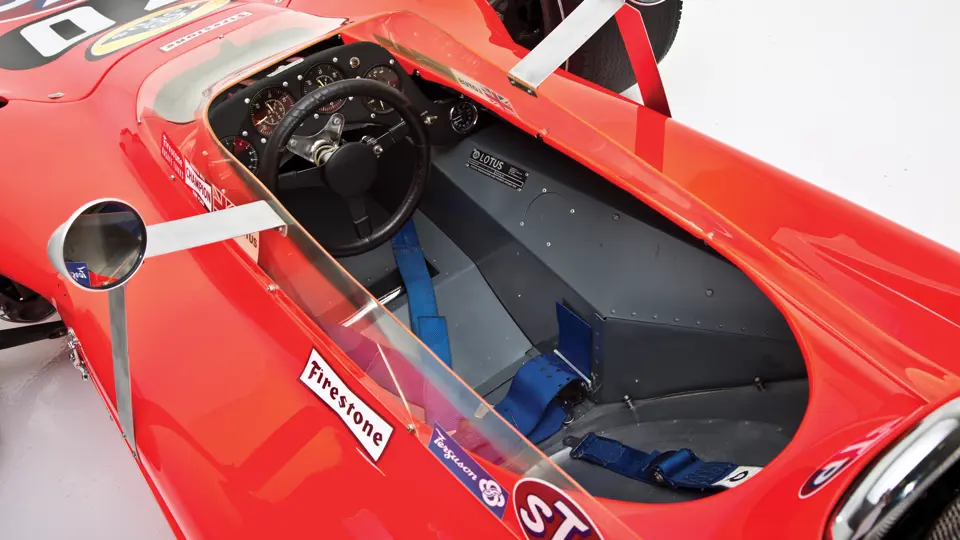



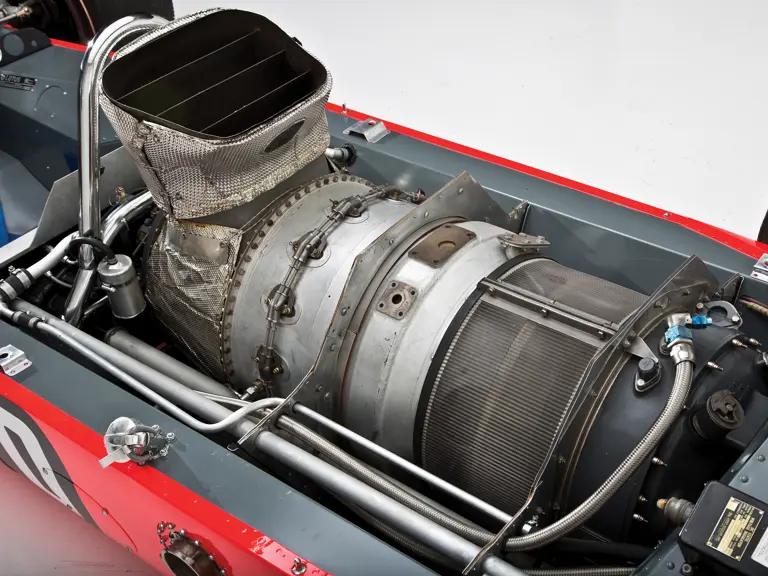


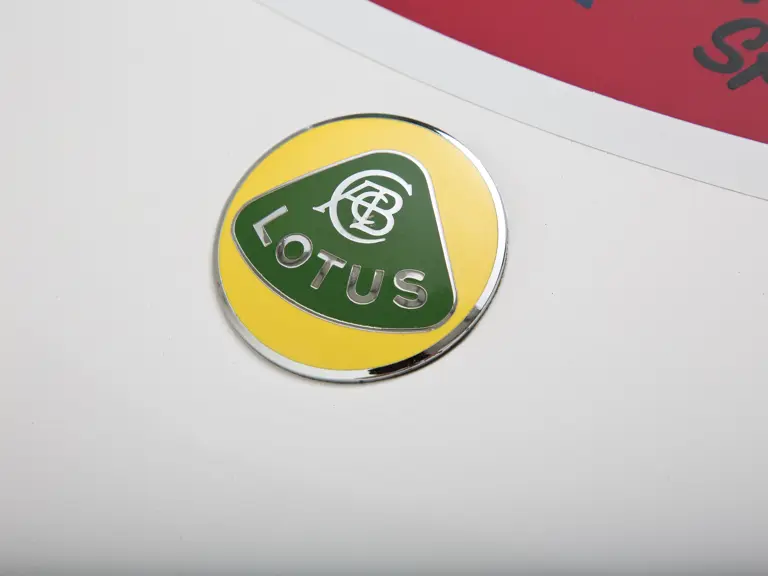

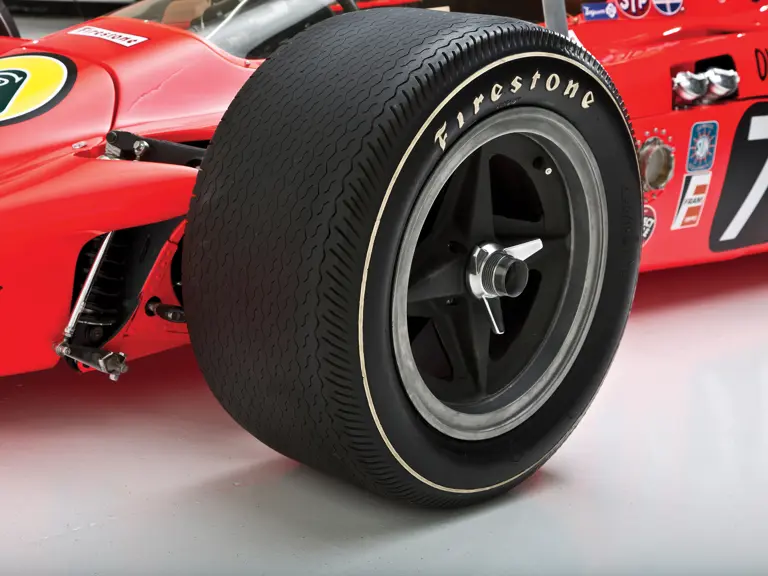

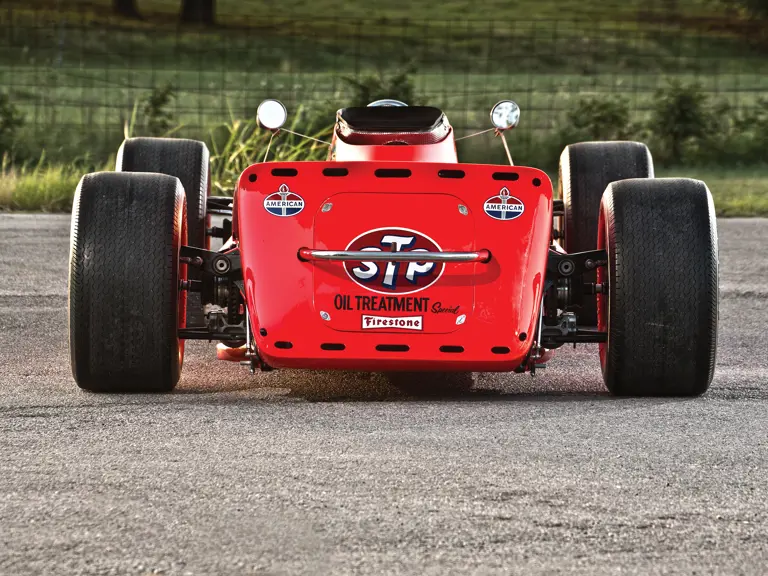
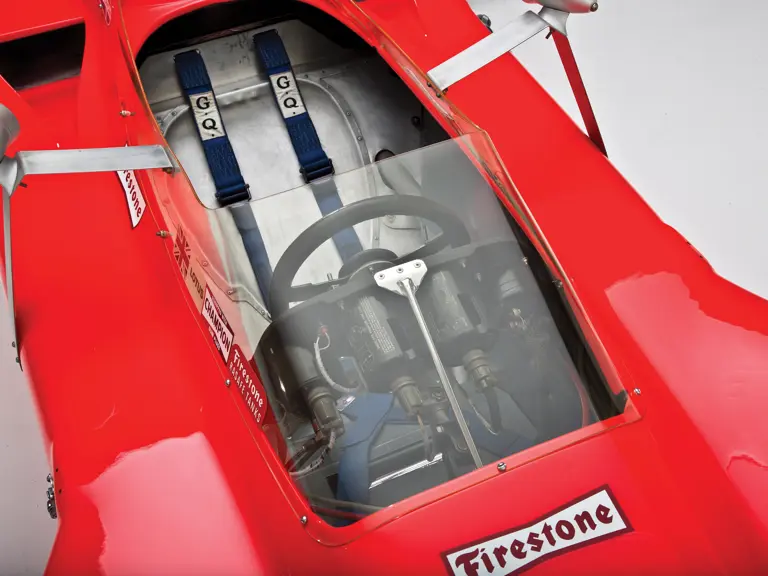

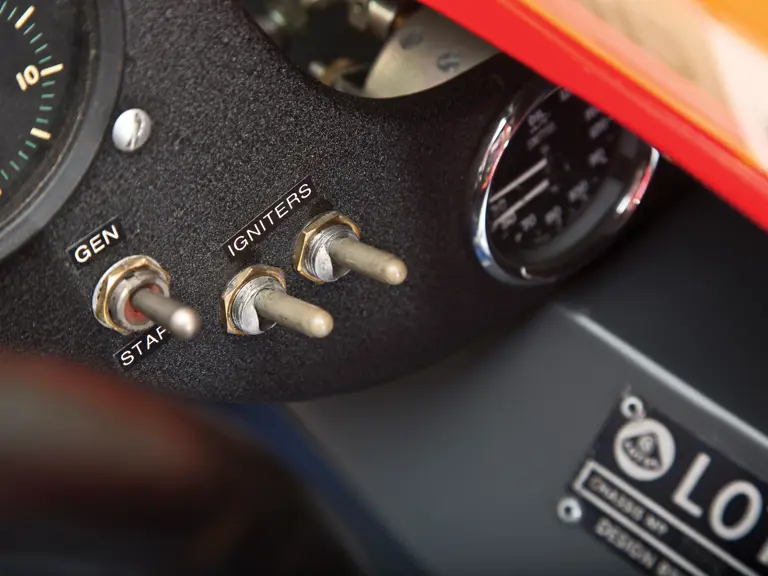
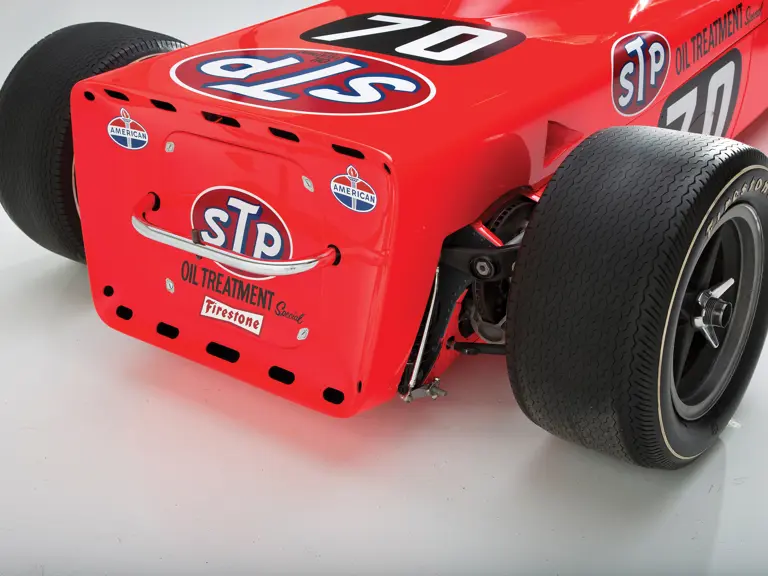
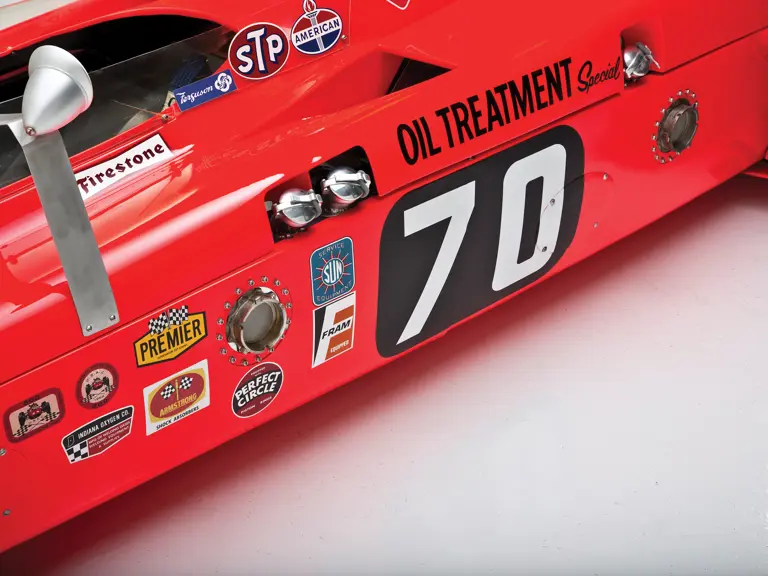
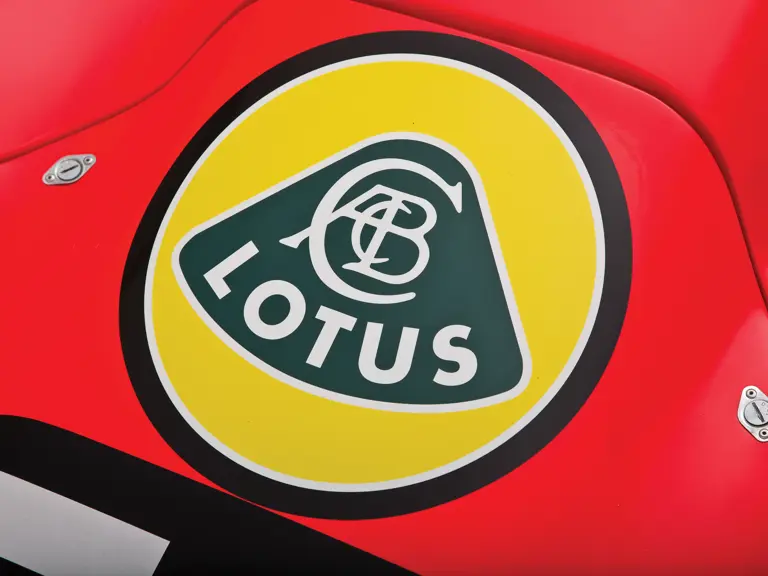
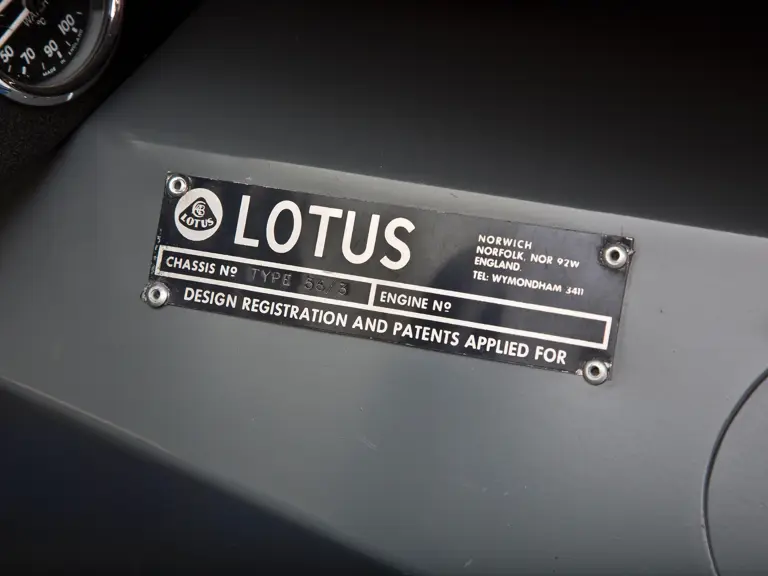

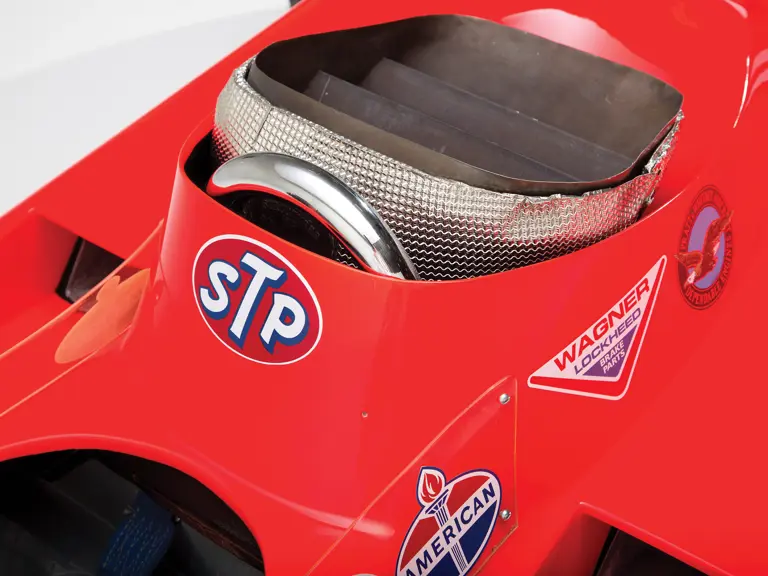
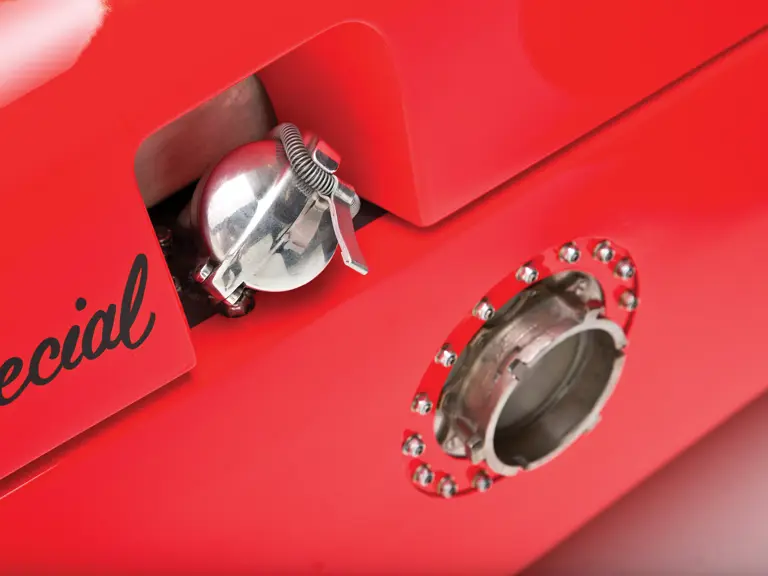
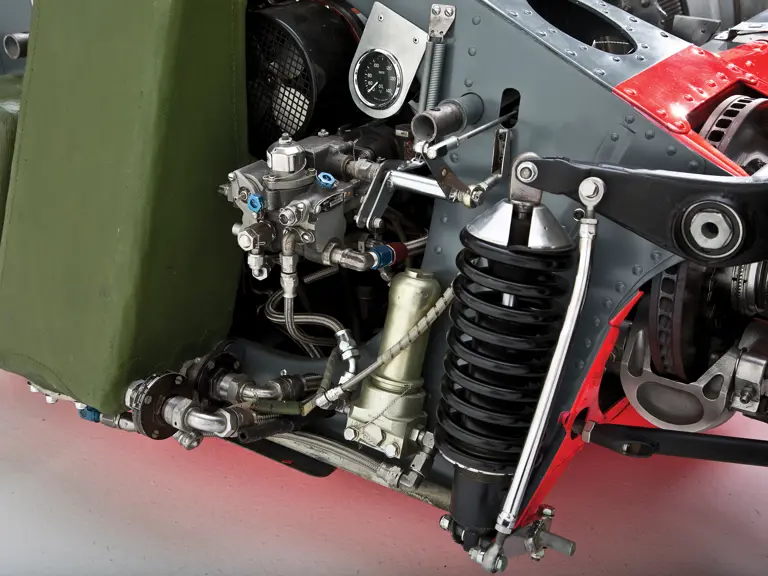



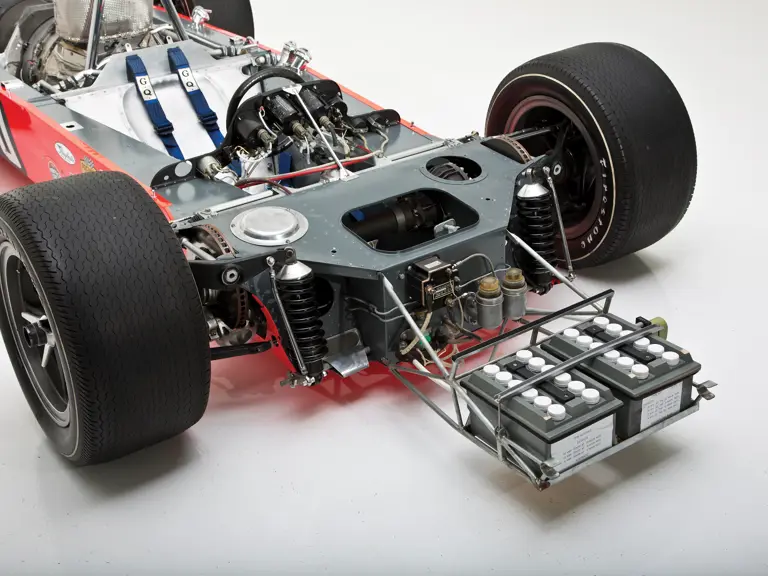
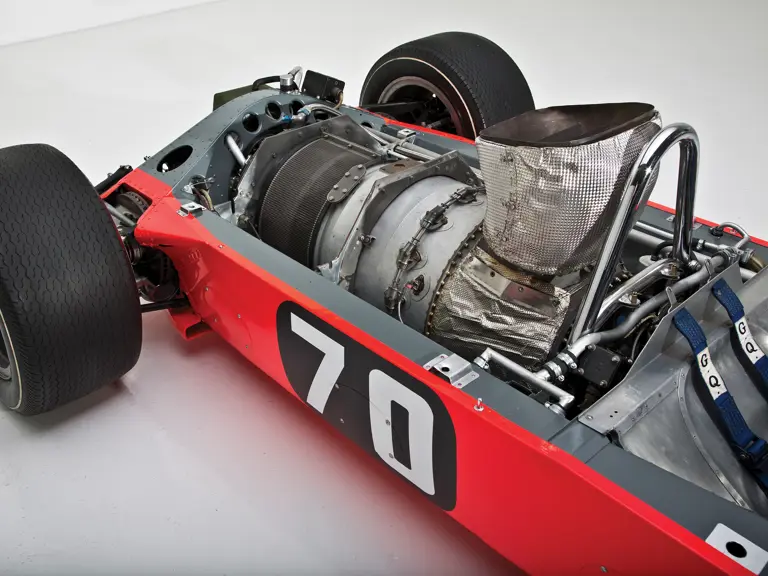
 | Monterey, California
| Monterey, California


